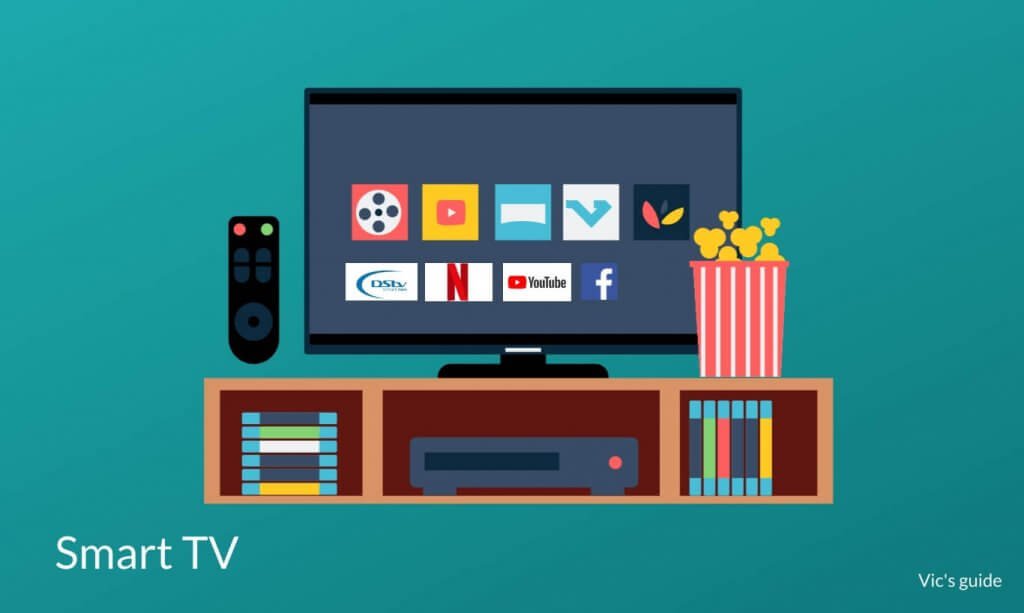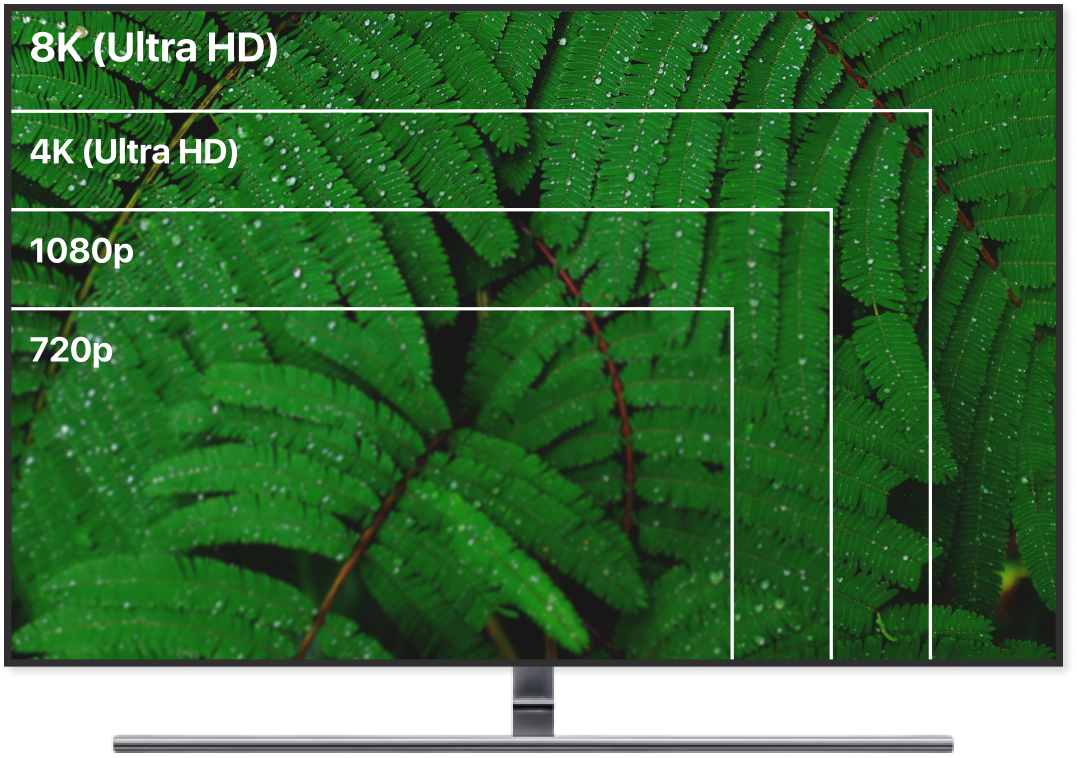Purchasing a new TV in this era is not an easy task considering all the technical hocus-pocus used by marketers to describe the specifications of the TV. Often, you must have come across FHD, UHD, 4K, and 8K and wondered what they actually represent. It is only normal to be confused, especially if it is your first time to see such terms, although after going through this article, you will do away with the confusion.
What is TV Resolution?

When you see a TV tagged 4K or 8K, the first thought that should pop into your mind is the resolution of the TV. However, in as much as the word “resolution” is common, the meaning seems unpopular even though it is not a brainer.
The resolution of a TV simply refers to the number of pixels used to light up a TV screen. Each pixel is just a tiny illuminated colored dot such as Light Emitting Diodes (LED). Resolutions of TVs are usually written as a multiplication of binomials; that is, A×B, with the first number (A) representing the horizontal (-) pixels while the second number (B) represents the vertical pixels (I).
You will have heard of resolutions like 1280×720, 1920×1080, 3840×2160, and so on, which are the commonest TV resolutions. We will discuss them in detail in the subsequent section.
Types of TV Resolution- HD, FHD, 4K, and 8K
There are a lot of misconceptions when it comes to understanding TV resolutions, solely due to the technical negligence of TV manufacturers. They tend to combine two different TV resolutions to represent a single product. We will explain how this happens and the differences in the available TV resolutions.

HD And 720p
HD is not a new word to anybody who has purchased a TV before since it is usually attached to other TV resolutions such as FHD, QHD, and UHD. The acronym for High Definition has become the choice of many TV users since consumers would likely purchase a TV with an HD in its spec.
Many HD TVs have divergent resolutions, although the ones with 1280×720p are the commonest. This is why many TV manufacturers would describe an HD TV as 720p. The small “p” after the 720 can be taken to be pixels; thus, an HD TV will have about a million pixels.
FHD and 1080p
HD TVs are gradually becoming scarce on the market since their production is significantly low. This is because many people will not want to buy HD TV has their resolution does not meet today’s TV standard. This has given an advantage to Full High Definition (FHD) TVs to take over in the market. FHD has about 2x the number of pixels in HD (2 million) with a typical resolution of 1920×1080p. Hence, they are also commonly referred to as 1080p TVs.
QHD, 1440p and 2K
You must know that there is a difference between QHD and qHD. While the former (QHD) refers to 2x the standard HD resolution, the latter implies a quarter of the standard HD resolution. Therefore, a standard QHD TV will have about four million pixels with a resolution of 2560×1440 to fall under the 1440p category.
Conversely, a standard qHD will have a resolution of 960×540 pixels and belong to the 540p TV category. The total pixels in a qHD TV is more than 500 000.
Another resolution attached to this group is 2K. The 2K resolution is often called QHD by many TV manufacturers since it is about half of the 4K resolution. However, this is not true since 2K refers to any TV with one of its resolution dimensions above 2000. Therefore, QHD is only a type of 2K resolution.
It should be noted that most QHD TVs have a better display quality than 2K TVs since it has a wider aspect ratio, and maybe, you have also come across a spec like WQHD before. WQHD is technically the same as QHD.
4K, UHD, and 2160p
When you buy a 4K TV, you will observe it has an Ultra High Definition (UHD) in large fonts beside it. As a result, it is generally believed that UHD and 4K TVs are the same though they are not. The two resolutions are actually similar but have divergent aspect ratios and serve different purposes.
While 4K TVs are mostly used for top-notch display in cinemas and for professional uses, UHDs are manufactured with you and me in mind. This is best observed if you consider the aspect ratio of 4K TVs which is wider than the typical 16:9 of UHD TVs.
A normal 4K TV will have a resolution of 4096×2160 pixels, while a UHD TV will come with 4x the standard HD resolution to house 3840×2160 pixels. Since both TV resolutions have a vertical number of 2160 pixels, you can assume both belong to the 2160p category of TV resolutions. Hence, when you see a TV with 2160p, it is either a 4K or UHD TV.
8K and 4320p
The last and latest TV resolution is the 8K resolution which has a standard resolution of 7680×4320. These TVs are not so popular since 8K videos are still very rare, and it will probably take Donkey years for us to start seeing them more.
An 8K TV has over 33 million pixels and produces a clear and detailed image of pictures in such a way that the black dots observed in other TV resolutions are removed. Since they have 4320 vertical pixels, they are also referred to as 4320p TVs.
You can now see that the resolutions of TV can be represented using the number of vertical pixels they have, as a multiple of the standard HD and the HD technology they utilized.
Best TV Resolution To Purchase In 2022
Having considered all the common types of TV resolutions, our next focus is to decide the best out of them at the moment. Under normal circumstances, 8K TVs would have been the best since they produced the best image quality; however, purchasing such TVs will be a waste of money since most movies are below the 8K quality.
Consequently, the best TV resolution in 2022 is any of 4K or UHD. As a consumer, an Ultra High Definition (UHD) TV is the better choice to go for, while professional filmmakers would consider 4K TV resolution first. Nonetheless, the resolution of a TV is not enough to judge the overall display quality.
It would not be surprising to find an FHD TV with a better display quality than a UHD TV because some other factors also contribute to the overall picture quality of a TV. These factors include dynamic range, brightness, contrast, color accuracy, darkness level, refresh rate, viewing angle, and even response time. Check our TV buying Guide which explained all of these features.
For instance, if you view TVs with different resolutions from a distance, you will not notice any change in the quality of their display since they would appear the same. Therefore, be sure to take a closer look if you want to single out the changes in the display qualities of different TV resolutions.
Best 4K TVs
[amazon box=”B09RMLLJPX,B0885F5GMP,B08TKXDLQB,B09VHBXY63,B086BG213X” template=”list”]
Is Resolution The Same As Screen Size?
The simple answer to this question is a capital NO. Screen resolution and screen size are two different terms, although some marketers might have convinced you of their homogeneity. Screen size refers to the physical dimension of the screen of a TV, usually measured diagonally across the TV screen, while screen resolution talks about the number of pixels that the screen houses.
You must also know that while a big screen implies a large screen size, it does not mean the TV has a high resolution. You cannot determine the resolution of a TV by merely considering the screen size, although TVs with large screens usually have high resolutions.
Screen size also does not determine the picture quality produced by a TV while screen resolution plays a major role in determining this. Thus, do not be deceived by the size of a TV screen but consider the resolution and the other factors we stated that affect the display quality of a TV.
Conclusion
As much as TV resolutions are very important, you must also remember to consider some of the other factors that enhance the display quality of a TV. Moreover, you may not be peculiar about this if you just need something to catch up with some of your favorite shows or News @ 7.
Any resolution between FHD and UHD is enough for home usage, and you can leave the 4K and 8K resolutions to the professionals.


